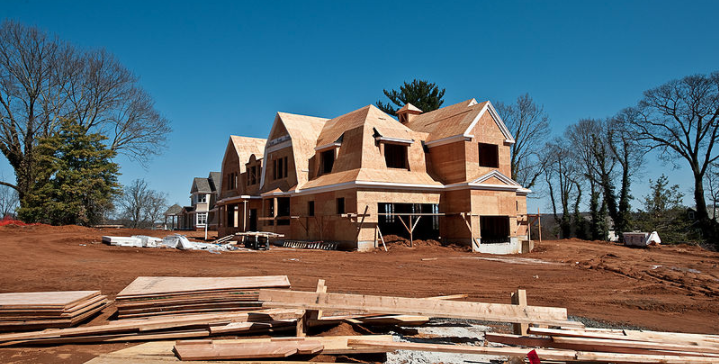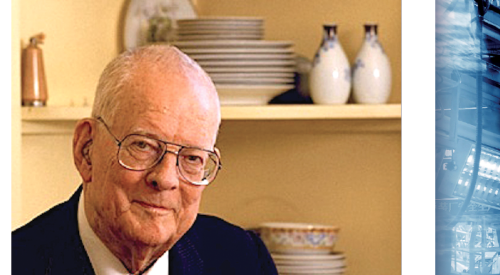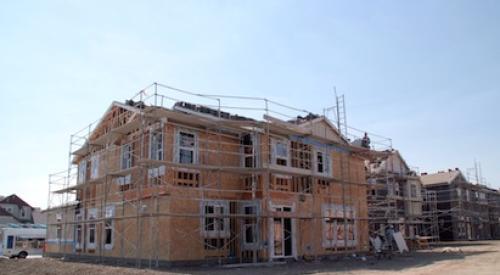When I began writing the January column memorializing Dr. Deming a quarter century after his passing, I wasn’t sure of the response I’d get. After all, 25 years is a long time, and although Deming has become a household name in major industries around the world, home building remains largely ignorant of his teachings. When people ask how I can still be writing monthly for 20 years, Deming, along with a few other mentors, provides much of the inspiration. If someone really strong offered a class titled “Deming & Home Building” I wonder, would anyone sign up? If that class were run each week for 10 years, with a full complement of 25 students in each, we’d hardly begin to meet the need. Yet need seldom equates to demand.
I did, however, get quite a bit of response to the first two installments—more than expected. That was encouraging, and several writers asked me for other Deming quotes I find particularly inspiring or motivating. I made my list of around 20, combined a few, and got it down to my “Deming Dozen.”
The Deming Dozen
You can simply Google “Deming quotes” and come up with another hundred you might choose from, but listed below are the ones that have guided me the past 30 years, not only in home building, but in managing my own company, the many volunteer groups I’ve been associated with, and sometimes even my family. Most of these you’ll find online, but some are directly from notes taken in the more than 100 hours I was fortunate enough to spend with Deming in person so many years ago.
1. “You cannot copy, you must understand why.”
The first time I heard this from Deming was in response to the topic of “benchmarking,” which was all the rage in the 1980s. On the surface, it was a great idea then and it still is today. Find a firm outside your immediate market doing an exceptional job in customer service, product design, employee relations, bringing products to market, managing information—literally any process a company needs to execute well to succeed. Go there. Learn from them. Sounds great, except most such exercises degrade into little more than “industrial tourism,” a show-and-tell that never gets to the heart of the matter. Thus, Deming’s admonition to never, ever simply copy. Push yourself, go deep, look behind the curtain, find the understanding. Learn the why behind the how. Otherwise you’ll make things worse, not better, which recalls another Deming quote, “Survival is not mandatory!”
2. “Where there is fear, you get wrong numbers.”
This one consumed a great deal of my work life when I entered home building full time three decades ago, and it still rears its head today. To that direct statement Deming often adds, “People with numerical targets and jobs dependent on meeting them will meet the targets, even if they have to destroy the enterprise to do it.” The big-name cases are legendary: Bernie Madoff, Enron, half of Wall Street in the last recession. But it’s the more subtle, everyday stuff that kills builders. Padding the traffic numbers to make an advertising program look better or lowering them to boost your conversion ratio. Fudging the schedule, hiding reality. Burying variances in budgets that can take the hit. Everyone knows how to do it, and with sufficient motivation, many will. The problem is, without honest and accurate numbers, improvement in processes becomes difficult, if not impossible.
3. “If you cannot describe what you are doing as a process, then you know not what you are doing.”
This bit of wisdom forces people out of the casual and anecdotal into specific steps of a process, breaking it down into something we can understand, analyze, and improve. The old “5 Whys” are helpful here. Ask yourself “Why?” five times and you are forced to dig below the surface. Try it. Consider a seemingly simple task such as updating the schedule, completing the sales contract, issuing the VPO, writing the scope of work, or setting the management team meeting agenda. Ask “Why?” five times, preferably with another coworker or two helping. When finished, you’ll begin to see the task as a process, taking your understanding to a far deeper level.
4. “Innovation comes from the producer—not from the customer.”
This seems to fly in the face of so much of what we are taught, but Deming would simply state, “No customer ever asked for a microwave oven!” Today he’d say the same about smartphones and tomorrow it may be driverless cars. Personally, I’d have never thought to ask for Uber or Lyft, but shared ride services have made my life significantly easier. The homeowner will tell you all about the experience and help you improve the products and service, but the real innovation will come from the builders and manufacturers. It’s your opportunity, seize it.
5. “If you do not know how to ask the right question, you discover nothing.”
One of my favorite Deming videos shows him standing in front of a big audience saying, “Two classes. Two teachers. One asks the students, ‘What is the capital of Wisconsin?’ The other asks, ‘Why is the capital of Wisconsin in Madison?’” Deming stretches out his hands and declares, “That makes all the difference. All the difference in the world.” He remains quiet for about 30 seconds, with a sly smile, scanning the room. Finally, he proclaims, “Think about it!” Then he instructs, “Discuss it amongst yourselves and report back.” He turns his back, walks slowly back to his chair and sits—for 30 minutes. I’ll let you figure out what happened and how to apply it to home building.
6. “Blame the process, not the people.”
It seems like at least once a week I have a conversation with some business entity that goes like this: “I know this is not your fault and you don’t make the rules, but what you just said doesn’t work for me, your customer.” In the past two months I have had that discussion with a doctor’s office, a hospital billing agent, my health insurance provider (perhaps five times), a gas utility, an electric utility, a cable company, a car dealer service center, an online clothing company, two banks, and an airline phone representative—and those are just the ones I recall off the top of my head. By the time I say that, I am quite frustrated but try to stay calm and friendly before I launch into the details. I do this because I know that at least 90 percent of the issues are caused by the process and systems people work within, not the people themselves. If there is one new habit managers of all ranks need to learn, it is to first exhaust every source of poor performance in process and systems before blaming individuals.
7. “The big problems are where people don’t realize they have one in the first place.”
Go back to my series last year on variance. So much of the problem is right there. Builders are generally so bad at measuring it, even if they sense a problem they always miss the magnitude. This is why in so much of my firm’s work with more than 250 builders over the past 20 years, we get the suppliers and trade contractors directly involved. Only by hearing directly from those involved do builders begin to feel the impact of broken systems, processes, practices, and cultures. Denial, displacement, and obfuscation are all active players here, with people working overtime to ignore, cover up, or bury the problems. The first step of the Alcoholics Anonymous 12-step program pledge fits perfectly here, saying in essence, “First, admit you have a problem.”
8. “Does experience help? No! Not if we are doing the wrong things.”
I have a certain list of builders that, when I hear someone worked more than 10 years for them, triggers this response in my brain: “I wonder if they are beyond rehabilitation?” That’s not kind, perhaps, but it is a learned response. These are the builders that consistently do the wrong things, be it supplier/trade relations, land usage, product design, construction methods, employee development, community relations, etc. The companies are profitable, sure, but the truth is their strong competitors make double what they do. So take heed, hiring someone with great experience doing the wrong things is worse than hiring a rookie with no experience at all. And working your own people harder on things they should not be doing or even right things using wrong methods achieves nothing.
9. “A goal without a method is nonsense.”
Deming was very much a numbers guy and taught statistics at the graduate level early in his career, but he had no patience for laying numerical goals on people without also providing the tools and empowerment with which to achieve them. He would often follow the quote above with “By what method?” This is a critical distinction that when overlooked renders goals and objectives worse than useless. How can that be? Give an individual or department a numerical goal without the method to achieve it, or the full authority to develop a method, and you create frustration. When they fail to make the goal, they are held accountable, yet they didn’t have a realistic chance. You just made things worse, not better.
10. “I’ve never met a company smart enough to work with one supplier.”
We covered this extensively in the January issue, but it’s so important it must take its place on this list. Simply put, it is so hard to manage all the ins and outs of one relationship. It takes everything you have to keep it positive and productive. (For a reasonable parallel, think marriage!) Trying to manage multiple partners creates complexity at an exponential level, and typically the result is multiple marginal to bad relationships. (You can decide for yourself whether I was talking about business or marriage in the previous sentence, but the lesson is clear.) Sole sourcing greatly simplifies life and business and, managed well, reduces frustration, communication errors, and costs. Sure, home building sometimes requires more relationships than we’d like—often more than one in any particular supplier/trade category. But know that this always increases complexity, the very bane of home building.
11. “There is no substitute for knowledge.”
I heard Deming say this so many times, it had to be a great personal frustration for him. He felt managers and executives continually plowed ahead, making plans and decisions without real knowledge, not just of the facts, but of how systems and processes function. He would often add to this, “Information is not knowledge, let’s not confuse the two.” We truly live in the Information Age, but I have yet to hear one person proclaim we live in an age of knowledge. Interesting to contemplate the implications of that, isn’t it?
12. “If you stay in this world, you will never learn another one.”
It was truly remarkable to hear a large but frail man, not long for this world, admonish a huge audience with this proclamation. Even past his 90th birthday and carrying an oxygen tank wherever he went, Deming was still pushing, still exhorting managers and executives to give up what they had learned when the U.S. had its way on everything and life was good, to now learn new ways of managing their companies. According to the good doctor, our success in the old world is the very thing that holds us back.
Back to the Future
Thinking back over my past three decades in home building, the beginning of which coincided with my personal introduction to Dr. Deming, perhaps my greatest discovery was how much his philosophy applied to life beyond the workplace. Another of my favorites from the Doctor that follows from No. 12 above, is simply, “We are here to make another world.” I have been told more than a few times that I have a “savior complex”—the type of person who wants to fix everything for everybody, including an entire industry, and believes he is personally anointed to do so. Thus, Deming’s admonition to “make another world” has great appeal for me. When I travel with my wife and we pass through security, baggage claim, rental car counters, and most of the restaurants and hotels along the way, she can see my wheels turning. If she’s lucky she gets to me before I start in on all my improvement ideas with a gentle but firm, “Remember, Scott, you are not in charge here.” But, oh, how I want to be, and there are many of you who’d be right there with me because we know, beyond any doubt, that we could fix that, whatever “that” is!
Builders are always looking for an edge, something to differentiate themselves, something to just be better than the next guy. So often it is sought through sales gimmickry, marketing campaigns, or price cuts. Each one of those, however, is short-term and self-extinguishing. What if you resolved for the new year to go back to the fountainhead and learn at the feet of the master? Go back and revisit the teachings of Dr. W. Edwards Deming—or discover him for the very first time.
One caution, however: If you take this road, you’ll tend to beat yourself up for waiting so long. But remember the old saying, “When the student is ready, the master will come.” The master has been there waiting. The years you spent getting ready, including all the mistakes and things you’d like to forget or do over, were an essential part of the learning process.
For a free PDF of Scott’s three-article series on Deming and links to his other recent series on “Grand-Theft Home Building,” “Bridging the Margin Gap,” and “Solving the Trade Shortage,” email your request to info@truen.com.













